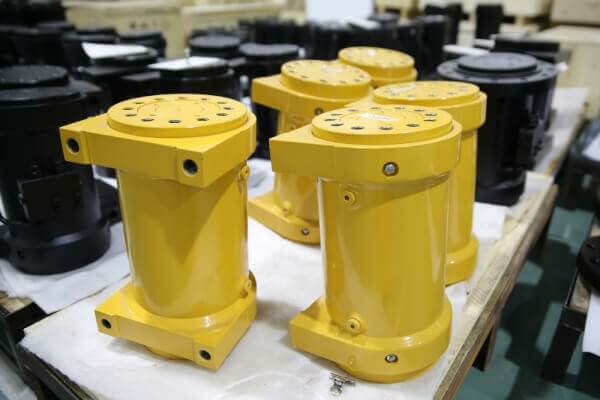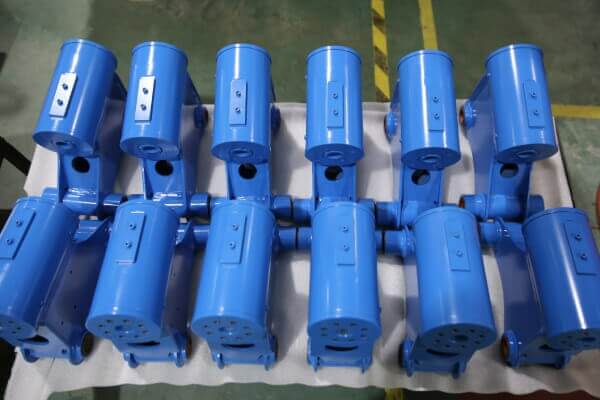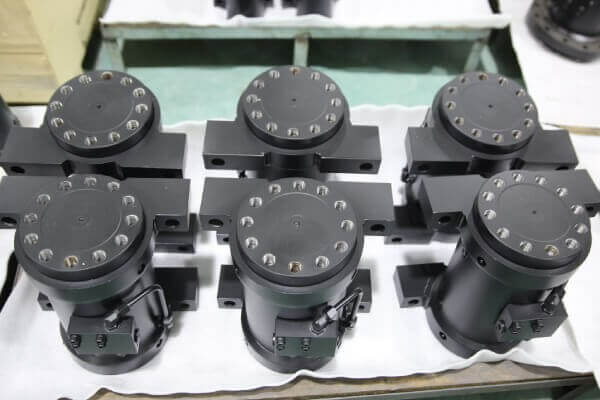As industries evolve with technological advancements, rotary valve actuators are no exception. These critical components in fluid control systems are experiencing significant innovation, driven by the need for increased efficiency, reliability, and integration with modern automation systems. Here, we explore the future trends and predictions for rotary valve actuators, highlighting the key developments shaping this technology.
1. Integration with IoT and Industry 4.0
The integration of rotary valve actuators with the Internet of Things (IoT) and Industry 4.0 technologies is set to revolutionize their functionality and application. Smart actuators equipped with sensors and connectivity features enable real-time monitoring, predictive maintenance, and seamless integration into automated systems.
In the coming years, we will see widespread adoption of IoT-enabled rotary valve actuators, providing enhanced operational efficiency and reduced downtime through predictive analytics and remote diagnostics. These smart actuators will communicate with central control systems, offering insights into performance metrics and allowing for real-time adjustments.
This integration will not only improve the efficiency and reliability of systems but also reduce costs associated with unplanned maintenance and downtime. Companies will be able to anticipate issues before they cause failures, ensuring smoother operations and extending the life of their equipment.
2. Enhanced Energy Efficiency
With the global emphasis on sustainability, manufacturers are focusing on developing rotary valve actuators that consume less energy while maintaining high performance. Innovations in motor technology and power management are key areas of development.
Future rotary valve actuators will incorporate advanced materials and designs that significantly reduce energy consumption, making them more eco-friendly and cost-effective over their operational lifespan. Developments such as variable speed drives and energy recovery systems will become more commonplace.
These energy-efficient actuators will help industries reduce their carbon footprint and comply with stringent environmental regulations. Lower energy consumption will also result in substantial cost savings over time, making these actuators a financially attractive option.
3. Advanced Materials and Manufacturing Techniques
The use of advanced materials such as composites and high-performance alloys, along with modern manufacturing techniques like additive manufacturing (3D printing), is enhancing the durability and performance of rotary valve actuators.
These advancements will lead to lighter, stronger, and more corrosion-resistant actuators, capable of operating in more demanding environments and extending their service life. We will see more customized solutions tailored to specific applications, thanks to the flexibility offered by additive manufacturing.
The improved durability and longevity of these actuators will reduce the frequency of replacements and maintenance, leading to lower operational costs and increased uptime. Industries operating in harsh environments, such as offshore oil and gas, will particularly benefit from these advancements.
4. Increased Automation and Control Precision
The demand for higher precision in automation processes is driving the development of rotary valve actuators with better control capabilities. Digital control systems and improved actuator design are central to this trend.
The next generation of rotary valve actuators will offer unprecedented levels of precision and responsiveness, enabling more complex and delicate automation tasks across various industries. Enhanced feedback systems and advanced algorithms will provide precise control over valve positions and movements.
This increased precision will enhance the quality and consistency of production processes, particularly in industries such as pharmaceuticals, food and beverage, and semiconductor manufacturing, where exact control is crucial. It will also enable more efficient use of resources, reducing waste and improving overall productivity.
5. Improved Reliability and Maintenance
Reliability is a critical factor in industrial applications. Manufacturers are investing in technologies that enhance the reliability of rotary valve actuators, such as self-diagnosing features and improved sealing technologies.
We will see actuators that require minimal maintenance and offer longer operational periods between service intervals, thanks to advanced diagnostic capabilities and robust construction. These actuators will be able to identify and report potential issues before they lead to failures.
Improved reliability and reduced maintenance needs will lower operational costs and increase the availability of equipment. This will be particularly beneficial in industries where downtime is costly, such as chemical processing and power generation.

6. Integration with Renewable Energy Systems
As renewable energy systems, such as wind and solar power, become more prevalent, there is a growing need for rotary valve actuators that can operate efficiently within these systems.
Rotary valve actuators designed for renewable energy applications will become more common, featuring specialized designs that accommodate the unique demands of these energy systems, including variability in operation and the need for high reliability.
These actuators will play a crucial role in optimizing the performance of renewable energy systems, contributing to more efficient and stable energy production. Their integration will support the global transition to cleaner energy sources.
7. Cybersecurity Enhancements
With increased connectivity comes the need for enhanced cybersecurity. Protecting the data and operational integrity of smart rotary valve actuators is becoming increasingly important.
Future rotary valve actuators will incorporate advanced cybersecurity measures to protect against unauthorized access and cyber threats, ensuring the safe and reliable operation of critical infrastructure. This will include encryption, secure communication protocols, and robust authentication mechanisms.
Enhanced cybersecurity will mitigate the risk of cyberattacks that could disrupt operations or cause safety hazards. Industries that rely on critical infrastructure, such as utilities and transportation, will benefit from improved security and peace of mind.
8. Modular and Scalable Designs
The industry is moving towards more modular and scalable actuator designs that can be easily adapted to different applications and system requirements.
Modular rotary valve actuators will become standard, offering customizable solutions that can be quickly scaled up or down, providing flexibility and reducing lead times for deployment. These designs will allow for easier upgrades and replacements of individual components.
The flexibility and scalability of these actuators will make them suitable for a wider range of applications, from small-scale laboratory setups to large industrial installations. This adaptability will reduce inventory costs and simplify maintenance procedures.
9. Cost Reduction through Technological Advancements
Technological advancements are driving down the cost of manufacturing and maintaining rotary valve actuators without compromising on quality or performance.
The cost of rotary valve actuators will continue to decrease, making them more accessible to a broader range of industries and applications, thereby accelerating their adoption. Economies of scale and improved manufacturing techniques will contribute to these cost reductions.
Lower costs will enable smaller businesses and emerging markets to adopt advanced actuator technology, driving innovation and competitiveness across various sectors. This democratization of technology will spur further advancements and applications.
10. Enhanced Safety Features
Safety is paramount in many applications of rotary valve actuators. Innovations are focusing on integrating safety features that prevent accidents and ensure the safe operation of the systems they control.
The future will see rotary valve actuators with built-in safety mechanisms, such as fail-safe operations, emergency shutoff capabilities, and enhanced control algorithms to prevent malfunctions and accidents. These safety features will be integrated into the actuator’s design rather than added as external components.
Enhanced safety features will reduce the risk of accidents and operational failures, protecting both personnel and equipment. Industries with stringent safety requirements, such as oil and gas, pharmaceuticals, and food processing, will particularly benefit from these innovations.

Conclusion
The future of rotary valve actuators is bright, with numerous advancements on the horizon that promise to enhance their functionality, efficiency, and reliability. From IoT integration and improved energy efficiency to advanced materials and enhanced safety features, these trends and predictions highlight a dynamic evolution of rotary valve actuators, positioning them as key components in the next generation of industrial automation and control systems. As these technologies develop, industries will benefit from more robust, efficient, and cost-effective solutions to meet their growing and changing needs.

